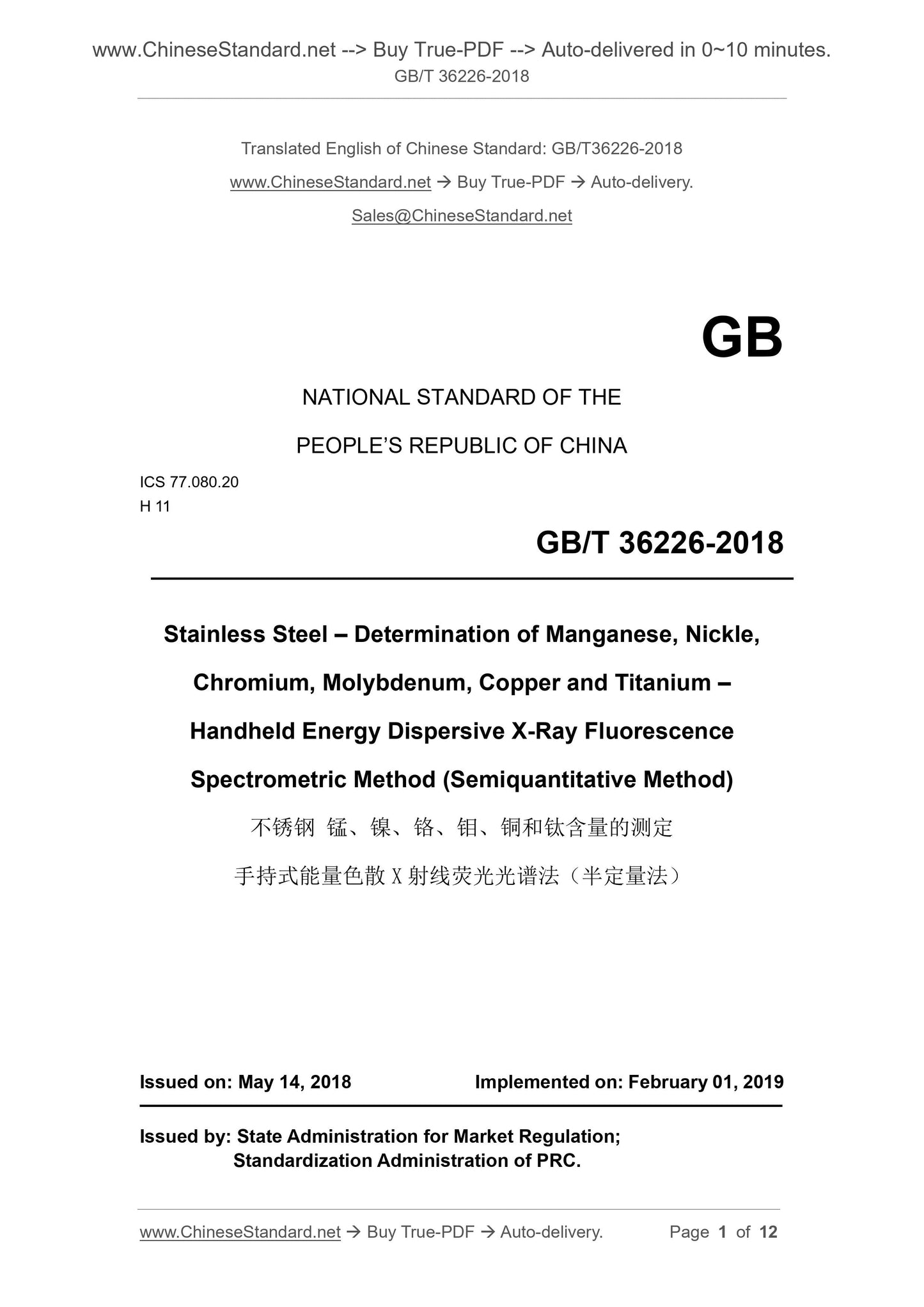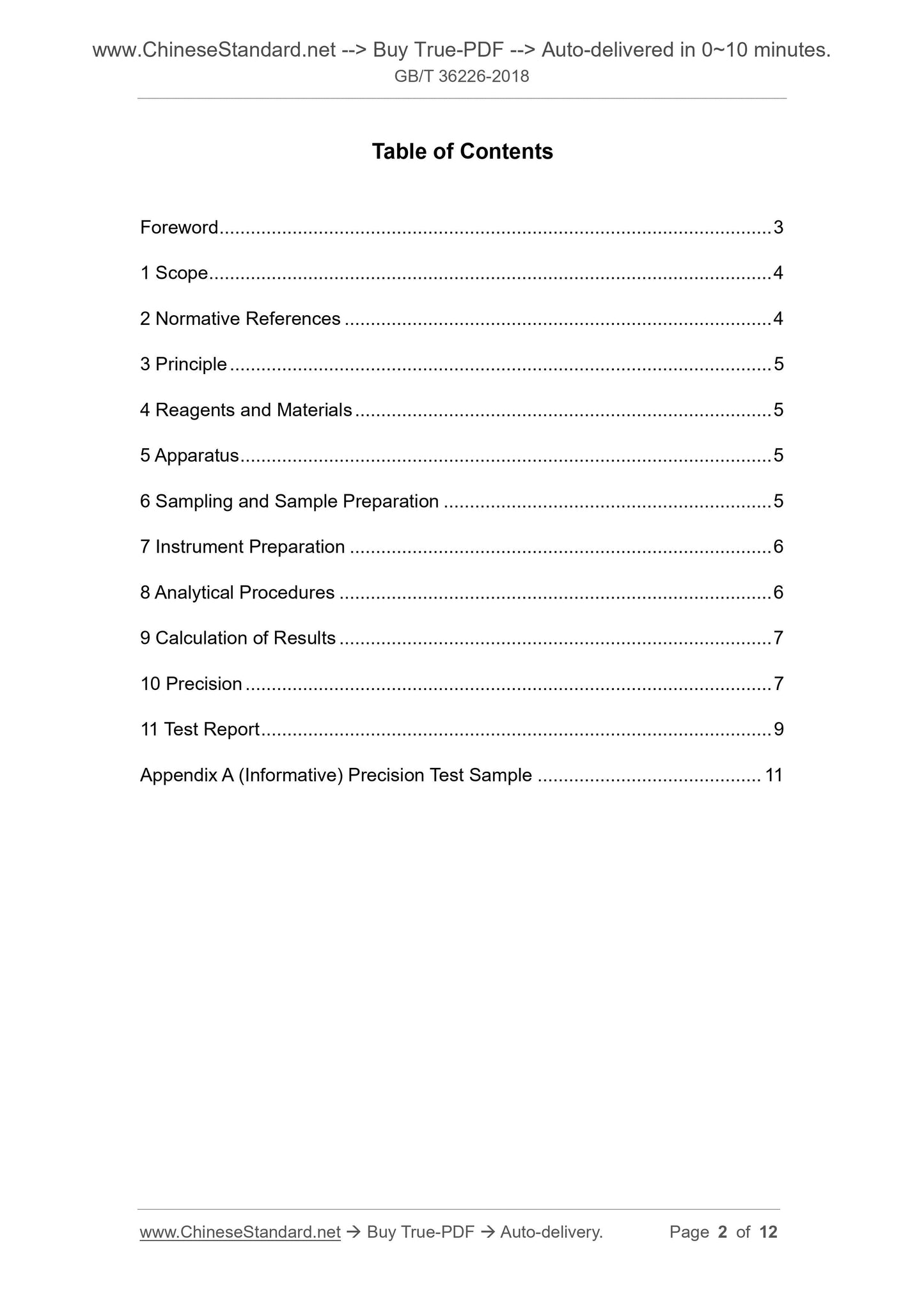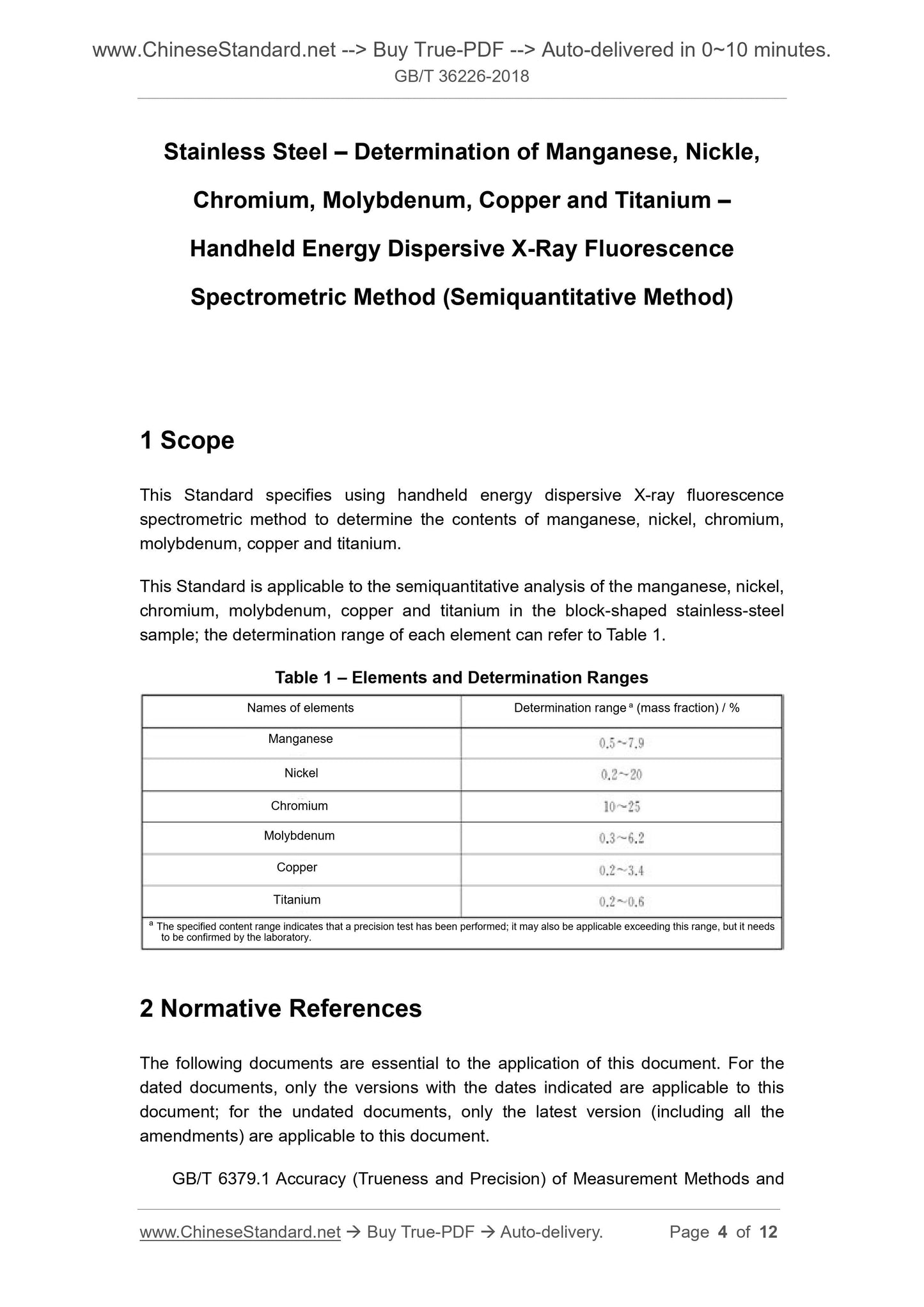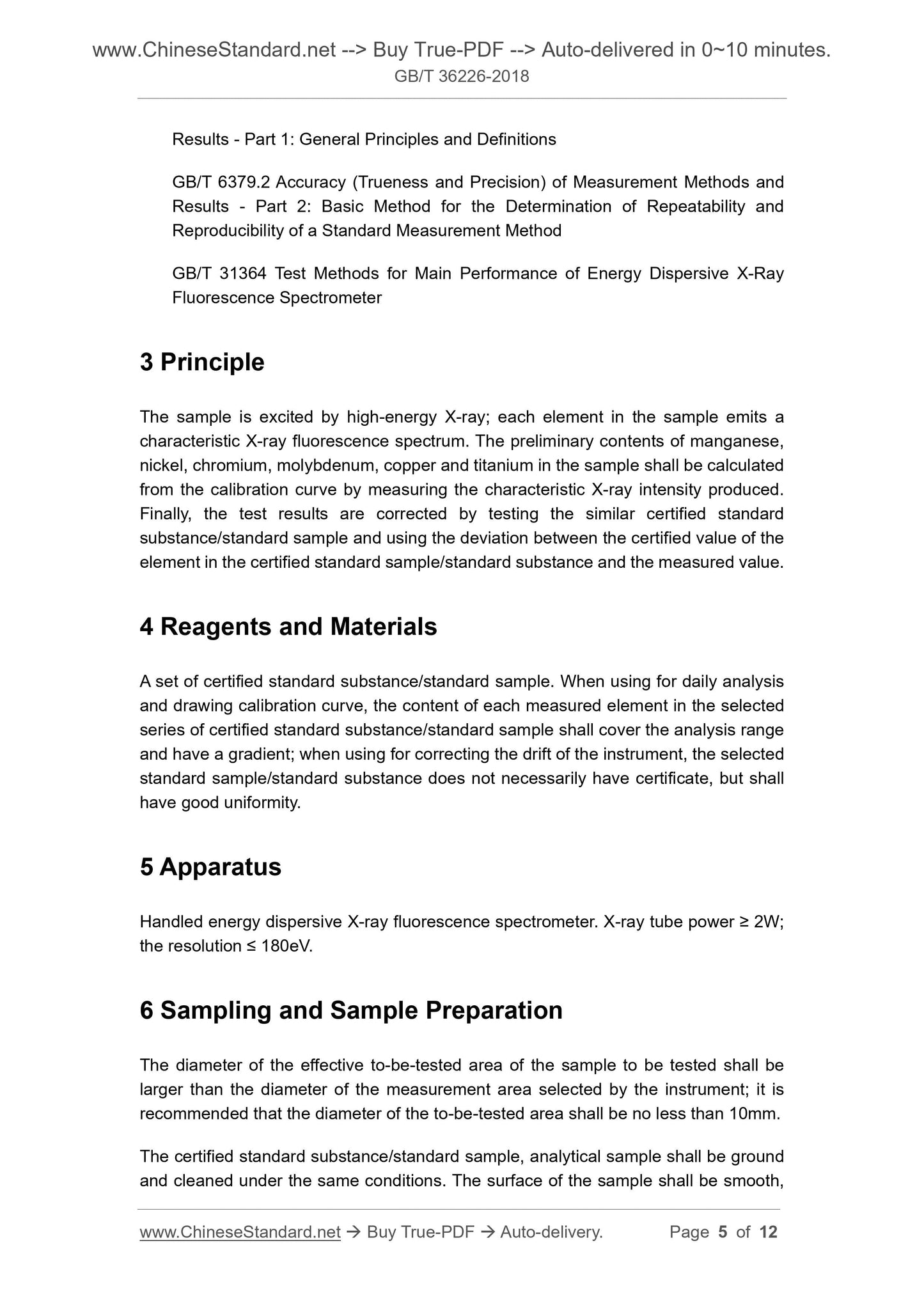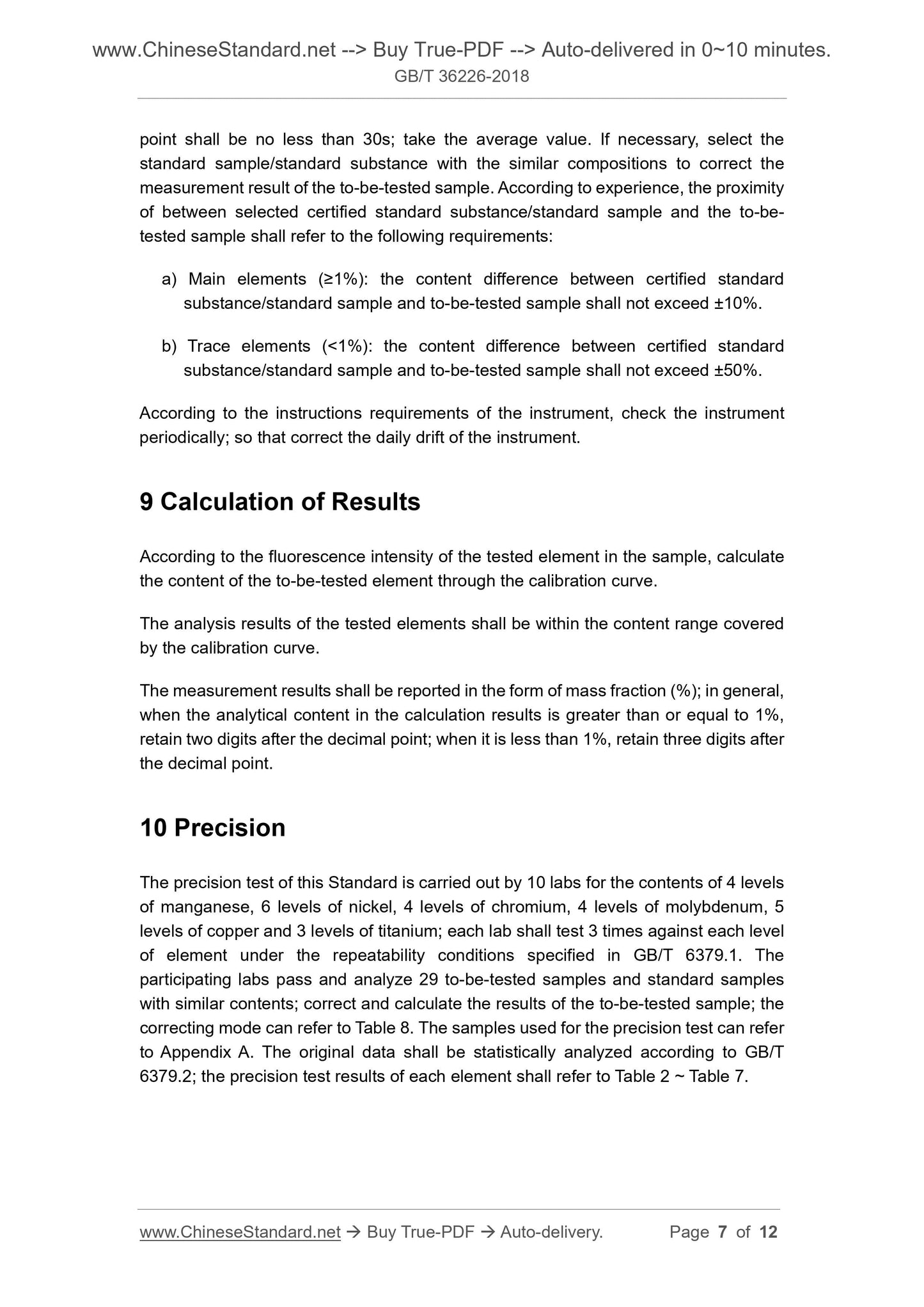1
/
of
5
www.ChineseStandard.us -- Field Test Asia Pte. Ltd.
GB/T 36226-2018 English PDF (GB/T36226-2018)
GB/T 36226-2018 English PDF (GB/T36226-2018)
Regular price
$150.00
Regular price
Sale price
$150.00
Unit price
/
per
Shipping calculated at checkout.
Couldn't load pickup availability
GB/T 36226-2018: Stainless Steel - Determination of Manganese, Nickle, Chromium, Molybdenum, Copper and Titanium - Handheld Energy Dispersive X-Ray Fluorescence Spectrometric Method (Semiquantitative Method)
Delivery: 9 seconds. Download (and Email) true-PDF + Invoice.Get Quotation: Click GB/T 36226-2018 (Self-service in 1-minute)
Newer / historical versions: GB/T 36226-2018
Preview True-PDF
Scope
This Standard specifies using handheld energy dispersive X-ray fluorescencespectrometric method to determine the contents of manganese, nickel, chromium,
molybdenum, copper and titanium.
This Standard is applicable to the semiquantitative analysis of the manganese, nickel,
chromium, molybdenum, copper and titanium in the block-shaped stainless-steel
sample; the determination range of each element can refer to Table 1.
Table 1 – Elements and Determination Ranges
Basic Data
| Standard ID | GB/T 36226-2018 (GB/T36226-2018) |
| Description (Translated English) | Stainless Steel - Determination of Manganese, Nickle, Chromium, Molybdenum, Copper and Titanium - Handheld Energy Dispersive X-Ray Fluorescence Spectrometric Method (Semiquantitative Method) |
| Sector / Industry | National Standard (Recommended) |
| Classification of Chinese Standard | H11 |
| Classification of International Standard | 77.080.20 |
| Word Count Estimation | 9,927 |
| Date of Issue | 2018-05-14 |
| Date of Implementation | 2019-02-01 |
| Regulation (derived from) | National Standards Announcement No. 6 of 2018 |
| Issuing agency(ies) | State Administration for Market Regulation, China National Standardization Administration |
Share
